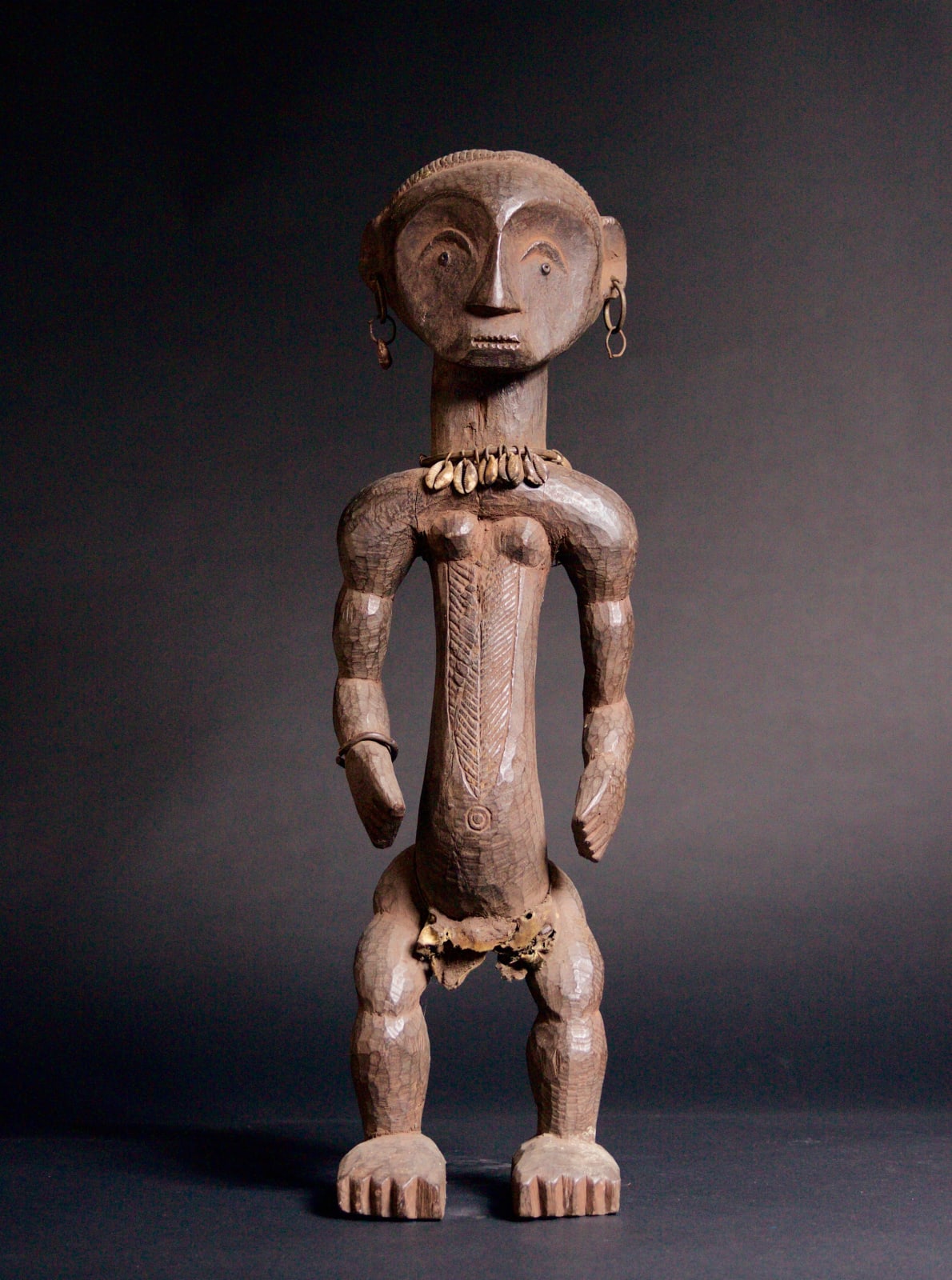Ngbaka Sculpture, 19th - 20th century
Wood
height 71.1 cm
height 28 in
height 28 in
MA.250
Further images
The Ngbaka arrived on the Gemena Plateau in 1920. They migrated from the area around Lake Chad to the north with the Manja and Gbaya peoples. Throughout their travels they...
The Ngbaka arrived on the Gemena Plateau in 1920. They migrated from the area around Lake Chad to the north with the Manja and Gbaya peoples. Throughout their travels they encountered numerous peoples who influenced their direction. It is known that the Ngbaka had contact with the Mabo at the Lua-Dekere River and with the Mono at the Bembe and Lubia Rivers. Although they share many cultural similarities with their neighbors, the Gbaya, they speak slightly different languages and consider themselves separate peoples.
The Ngbaka believe in a supreme deity called Gale or Gbonboso. His message was brought to Earth by two messengers, Seto and Nabo, who are recognized as the primordial ancestors of the Ngbaka peoples. They are sister and brother who created the Ngbaka through an act of incest. Respect is paid to these ancestors whose carved images are daily placed upon the twabozo (family altar), where they are protected from any misfortune that might befall them. It is believed that they protect the owner and his family from hardship and that they also have the ability to cure many types of illness. Divination, which has the power to reveal the causes of misfortune, is an essential part of Ngbaka society.
The Ngbaka believe in a supreme deity called Gale or Gbonboso. His message was brought to Earth by two messengers, Seto and Nabo, who are recognized as the primordial ancestors of the Ngbaka peoples. They are sister and brother who created the Ngbaka through an act of incest. Respect is paid to these ancestors whose carved images are daily placed upon the twabozo (family altar), where they are protected from any misfortune that might befall them. It is believed that they protect the owner and his family from hardship and that they also have the ability to cure many types of illness. Divination, which has the power to reveal the causes of misfortune, is an essential part of Ngbaka society.







